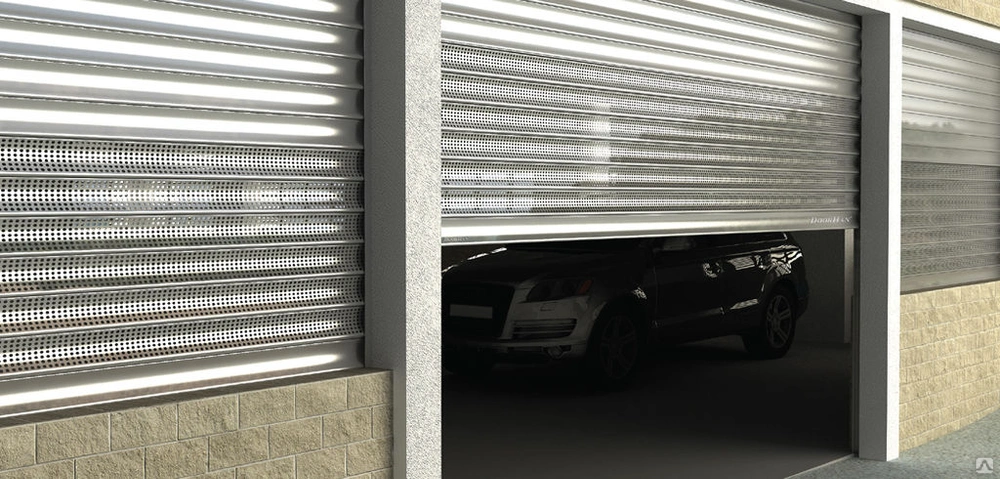Light fabrication plays a crucial role in various industries, offering a wide range of applications. In Adelaide, this process has become an integral part of manufacturing, contributing to the growth of the local economy. In this article, we will delve into the world of light fabrication, exploring the quality control measures, typical applications, materials used, tools and equipment required, and the future of this industry in Adelaide. Additionally, we will address the challenges faced by manufacturers and highlight the advantages of choosing light fabrication. So, let’s shed light on the secrets of Light Fabrication Adelaide and discover what makes it such a vital component of the manufacturing sector in Adelaide.
Quality Control in Light Fabrication
Quality control is a crucial aspect of any fabrication process, and light fabrication is no exception. Manufacturers in Adelaide prioritize quality to ensure that their products meet the highest standards. One of the critical quality control measures in light fabrication is the rigorous testing of materials before they are used in the manufacturing process. It includes assessing the strength, durability, and reliability of the materials to ensure they can withstand the intended applications.
Furthermore, quality control extends to the fabrication process itself. Manufacturers employ skilled technicians who are well-versed in the intricacies of light fabrication. These technicians meticulously monitor each step of the process, ensuring precision and accuracy in every cut, weld, and assembly. This attention to detail guarantees that the final products meet the desired specifications and perform optimally in their intended applications.
To further enhance quality control, manufacturers in Adelaide also utilize advanced inspection techniques such as non-destructive testing. It allows them to assess the integrity of the fabricated components without causing any damage. Through these stringent quality control measures, Adelaide’s light fabrication industry ensures that its products are of the highest quality, meeting the demands of various sectors such as automotive, aerospace, and electronics.
Common Applications of Light Fabrication
Light fabrication finds applications in a wide range of industries, making it a versatile manufacturing process. In Adelaide, this technique is utilized in the production of various components for the automotive industry. These include chassis, brackets, and engine parts, among others. The lightweight nature of fabricated components offers numerous advantages in the automotive sector, such as improved fuel efficiency and enhanced performance.
Another significant application of light fabrication is in the aerospace industry. Fabricated components are used in the construction of aircraft structures, including wings, fuselages, and landing gear. The use of lightweight materials in these components contributes to the overall fuel efficiency of aircraft, reducing operating costs and environmental impact. Additionally, the strength and durability of fabricated aerospace components ensure the safety and reliability of air travel.
The electronics industry also heavily relies on light fabrication for the production of various components. Circuit boards, enclosures, and connectors are just a few examples of fabricated parts used in electronics manufacturing. The precision and accuracy achievable through light fabrication techniques are essential in this industry to ensure the proper functioning of electronic devices.
These applications are just a glimpse into the vast potential of light fabrication. As technology continues to advance, new possibilities for its application in various industries are being discovered, further driving the growth of this sector in Adelaide.
The Future of Light Fabrication Adelaide
The future of light fabrication in Adelaide looks promising, with advancements in technology and increasing demand for lightweight components across various industries. The adoption of automation and robotics in light fabrication processes is set to revolutionize the industry, enhancing productivity and efficiency.
Automation allows for faster production cycles, reduced labour costs, and improved quality control. Robotic systems can perform intricate tasks with precision, eliminating the risk of human errors. These advancements will not only streamline the fabrication process but also open up new possibilities for complex designs and customizations.
The development of new materials and alloys will expand the horizons of light fabrication. The introduction of innovative materials with enhanced properties, such as increased strength and improved heat resistance, will enable manufacturers to push the boundaries of what is achievable in terms of lightweight components.
As the demand for sustainable and eco-friendly solutions continues to grow, light fabrication is expected to play a significant role. The use of lightweight materials in various industries contributes to reducing energy consumption and environmental impact. It aligns with the global trend towards sustainability, making Light Fabrication Adelaide an essential part of the future of manufacturing.
Materials Used in Light Fabrication
Light fabrication involves the use of a diverse range of materials, each chosen based on the specific requirements of the application. Aluminum is a commonly used material in light fabrication due to its lightweight nature, corrosion resistance, and high strength-to-weight ratio. It is particularly favoured in industries such as automotive and aerospace.
Stainless steel is another popular material in light fabrication. Its excellent strength and durability make it suitable for applications that require resistance to corrosion and high temperatures. Stainless steel components are widely used in industries such as food processing, architecture, and medical equipment manufacturing.
In addition to aluminium and stainless steel, various other materials find their place in light fabrication. Carbon fibre composites offer exceptional strength and lightweight properties, making them ideal for applications in the automotive, aerospace, and sports equipment industries. Plastics, such as high-density polyethylene (HDPE) and polycarbonate (PC), are also utilized in light fabrication for their versatility and cost-effectiveness.
The selection of materials in light fabrication is a critical decision that manufacturers in Adelaide make based on the specific requirements of their clients and the intended applications of the fabricated components.
Tools and Equipment for Light Fabrication
To achieve precise and accurate results in light fabrication, manufacturers in Adelaide rely on a wide range of tools and equipment. Laser cutting machines are commonly used to precisely shape materials, offering high-speed cutting with minimal heat distortion. These machines utilize focused laser beams to cut through various materials, ensuring clean and precise edges.
Welding equipment plays a fundamental role in light fabrication, allowing for the joining of different components. TIG (Tungsten Inert Gas) welding and MIG (Metal Inert Gas) welding are two popular methods used in light fabrication. TIG welding offers excellent control and produces high-quality welds, making it suitable for delicate and intricate components. On the other hand, MIG welding provides high productivity and is often used for larger-scale fabrication projects.
CNC (Computer Numerical Control) machines are extensively used in light fabrication for precise and automated cutting, drilling, and shaping of materials. These machines allow manufacturers to achieve complex designs with exceptional accuracy and repeatability.
Other essential tools and equipment used in light fabrication include shearing machines, bending machines, and press brakes, which enable the shaping and forming of materials. Additionally, measuring instruments such as callipers, micrometres, and gauges are vital for ensuring the accuracy and quality of fabricated components.
Challenges and Solutions in Light Fabrication
While light fabrication offers numerous benefits, it also presents its fair share of challenges. One of the primary challenges is maintaining the balance between weight reduction and structural integrity. The lightweight nature of fabricated components should not compromise their strength and durability. Achieving this balance requires careful material selection, design optimization, and accurate fabrication techniques.
Another common challenge is achieving consistency and repeatability in the fabrication process. Variations in material properties, equipment performance, and human factors can impact the quality of fabricated components. Implementing stringent quality control measures, regular equipment maintenance, and continuous training of technicians are some of the solutions to address this challenge.
Cost-effectiveness is another aspect that manufacturers in Adelaide need to consider. While lightweight components offer advantages such as reduced fuel consumption and improved performance, the cost of materials and fabrication processes should be carefully managed. Efficient material utilization, process optimization, and strategic partnerships with suppliers are some of the solutions to ensure cost-effective light fabrication.
Advantages of Choosing Light Fabrication
There are several advantages to choosing light fabrication for manufacturing needs. Firstly, the use of lightweight materials in fabricated components offers improved fuel efficiency, reducing operational costs and environmental impact. It is particularly beneficial in industries such as automotive and aerospace, where fuel consumption plays a significant role.
The lightweight nature of fabricated components allows for more accessible transportation and installation. It not only saves time but also reduces logistical complexities and costs. Light fabrication techniques provide excellent strength-to-weight ratios, ensuring the durability and reliability of the fabricated components. It is crucial in industries that require members to withstand high-stress and demanding conditions.
Light fabrication enables complex and intricate designs that would be challenging to achieve through traditional manufacturing processes. The precision and accuracy offered by light fabrication techniques allow for customization and innovation, meeting the unique requirements of various industries.
FAQs
Here are some Frequently Asked Questions that people may ask about Light Fabrication in Adelaide:
Q: What industries can benefit from light fabrication Adelaide?
A: Light fabrication finds applications in industries such as automotive, aerospace, electronics, and many more. Its versatility makes it a valuable manufacturing process across various sectors.
Q: What materials are commonly used in light fabrication?
A: Aluminium, stainless steel, carbon fibre composites, and plastics are some of the widely used materials in light fabrication. The material selection depends on the specific requirements of the application.
Q: How does light fabrication contribute to sustainability?
A: The use of lightweight materials in various industries reduces energy consumption and environmental impact. It aligns with the global trend towards sustainability, making light fabrication an eco-friendly solution.
Q: What are the challenges in light fabrication?
A: Maintaining the balance between weight reduction and structural integrity, achieving consistency and repeatability, and managing costs are some of the challenges in light fabrication.
Q: What are the advantages of choosing light fabrication?
A: Benefits include improved fuel efficiency, more manageable transportation and installation, excellent strength-to-weight ratios, and the ability to achieve complex designs.
Q: What is the future of light fabrication in Adelaide?
A: The end of light fabrication in Adelaide looks promising, with advancements in technology, increasing demand for lightweight components, and a focus on sustainability.
Conclusion
Light fabrication is a vital manufacturing process that plays a significant role in various industries in Adelaide. With stringent quality control measures, a wide range of applications, diverse materials, and advanced tools and equipment, light fabrication offers numerous advantages. As technology continues to advance and the demand for lightweight components grows, the future of light fabrication in Adelaide looks promising. By addressing the challenges and capitalizing on the benefits, manufacturers can continue to thrive in this dynamic industry. So, embrace the secrets of light fabrication and unlock its potential for your manufacturing needs.



